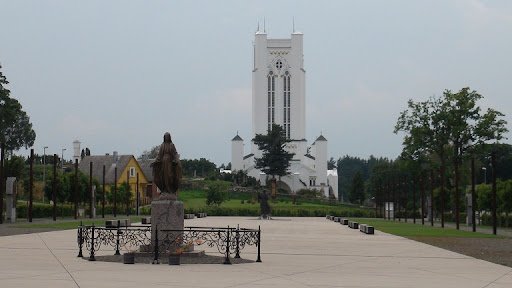About Our Lady of Šiluva
Šiluva Facts
1457
Peter Gedgaudas founded a parish and later built a church of “Šilai” later called “Šidlava” (from a Polish “Szydlo”) then “Šiluva.”
1608-1612
Our Blessed Mother appeared to the shepherd children of Šiluva.
1622
Rev. Jonas Kazakevicius brought action against the Calvinists and the property was restored to the Catholic Church.
1627
Rev. Jonas Kazakevicius was appointed dean in Šiluva. A small wooden church was built by his own means. Famous for its miracles, many visitors came.
1641
A larger church was built, and Rev. Kazakevicius opened a “free of charge” school for village children.
1651
Bishop Petras Parcevskis consecrated the new church.
1663
Bishop Aleksandres Sapiega set an altar over the “stone” on which our Blessed Mother stood. By the altar was placed a small wooden statue of Christ, and it is standing there to this day.
1760-1775
Deans of Šiluva — Jonas Lopacinskis and Tadas Bukota built a new Šiluva church.
1770
Tadas Kukota brought a marble statue of the Blessed Mother and Child from London, which still stands in the chapel of the church.
1818
Bishop Simonas Giedraitis built a larger chapel in the style of the Vilnius Cathedral.
1912-1924
For the 300th anniversary of the Šiluva Apparitions, a new chapel was built — Antanas Vivulskis, architect Jonas Maciulis-Maironis. Marčijonas Jurgaitis, Dean of Šiluva, consecrated the foundation.
1967
New organ was installed.
1979
The chapel was re-decorated and gilded.
1980
Four frescoes were added to the chapel ceiling.
1993
On September 7, 1993, our Holy Father, Pope John Paul II visited the Shrine of Our Lady of Šiluva.
2002
Rev. Virginijus Lenktatis, Basilica of the Nativity of the Blessed Virgin Mary, Šilvos Bazilikos Klebonas ir Rašeiniu Dekanas.


